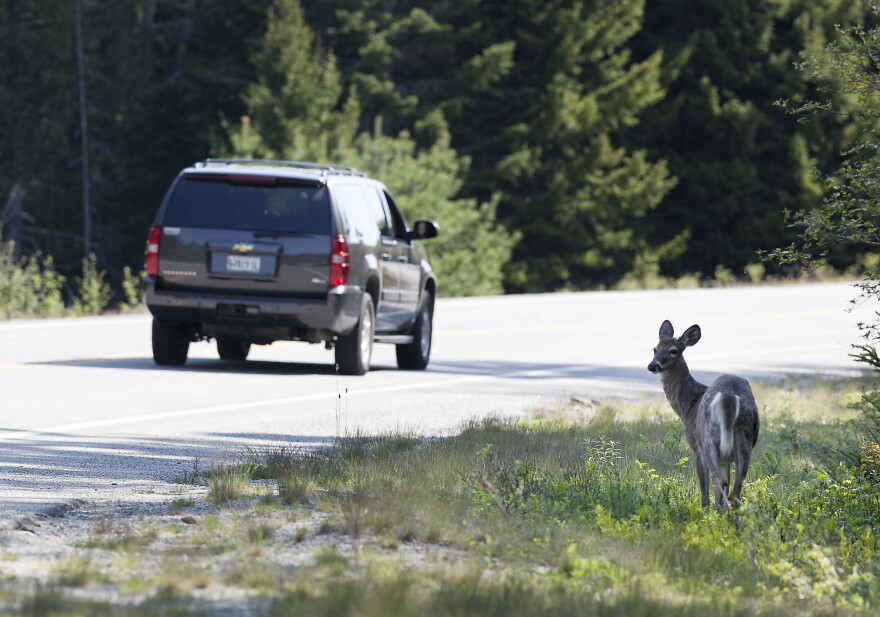BETHLEHEM, Pa. — There’s a constant tension in the Lehigh Valley, state Rep. Michael Schlossberg said, between conserving the environment and economic development.
A study recently approved by lawmakers aims to help strike a balance.
- Pennsylvania lawmakers on May 23 passed a resolution to study the status, management and benefits of wildlife corridors across the state
- The report is expected within 18 months
- It's an important first step to conserving green spaces amid the state's $14 billion outdoor recreation industry
“As one of the fastest growing locations in Pennsylvania — indeed, the entire East Coast — we are constantly displacing natural wildlife and ecosystems,” Schlossberg, D-Lehigh, said.
“Any growth has to be managed responsibly, and I think the results of this study could ensure that we do a better job of finding out what legislative steps we need to take to limit the harm our development brings.”
State legislators last week passed a resolution to study and issue a report on the status, management and benefits of wildlife corridors — natural areas set aside or created to give animals space amid development — across the state.
"We've done a lot, but there's always more that we can do."State Rep. Peter Schweyer, D-Lehigh
Passed by a 129-72 vote, House Resolution 87 empowers the House Legislative Budget and Finance Committee to complete the report within 18 months.
It’s a first step, local representatives said, but also an important one amid the commonwealth’s $14 billion outdoor recreation industry, as well as an uptick in insurance claims following collisions between animals and vehicles.
“We've done a pretty good job of supporting conservation here on the local level,” state Rep. Peter Schweyer, D-Lehigh, said. “We've done a lot, but there's always more that we can do.”
What is a wildlife corridor?
A wildlife corridor is a strip of natural habitat connecting populations of wildlife otherwise separated by man-made development. As development increases, animal habitats generally decrease.
“The expanding U.S. population is bringing more people and development into conflict with wildlife and their historic habitats,” according to The National Wildlife Federation.
“And climate change is fundamentally altering landscapes, forcing many animals to relocate.”
“Fragmentation reduces the ability of wildlife to migrate, find mates, disperse [establish new territories] and may limit their access to food and water. Fragmentation also limits wildlife’s ability to adapt to climate change.”Endangered Species Coalition
Habitat loss and fragmentation are the biggest drivers of species decline and extinction worldwide, according to the Endangered Species Coalition.
“Fragmentation reduces the ability of wildlife to migrate, find mates, disperse [establish new territories] and may limit their access to food and water,” according to the organization. “Fragmentation also limits wildlife’s ability to adapt to climate change.”
Those fragmented landscapes can pose a risk to people, too — especially in Pennsylvania.
Commonwealth residents filed an estimated 166,000 auto insurance claims from July 2020 to June 2021 for animal collisions, according to data from insurance company State Farm. It was the top-ranking state in the country.
But with HR87, the state also will be better positioned as the Federal Highway Administration begins to roll out a five-year $350 million competitive grant program to fund wildlife crossings across the country, according to PennEnvironment officials.
“Building wildlife crossings, including underpasses and overpasses, will save people as well as animals,” officials said.
‘It has to be balanced’
Having a study could not only help bolster conservation efforts but also spur conversations about the economic advantages of green spaces, Schlossberg said.
“With the notable exception of hunting and fishing, there hasn't been a great deal of examination on ecotourism,” he said.
“There has not been a great deal of examination on how we protect and preserve areas of our commonwealth in a way that not only allows for a spot of a habitat but allows for that natural migration, those natural corridors, the larger ecosystems that exist.”
“It has to be balanced if you want to maintain a good quality of life.”State Rep. Robert L. Freeman, D-Northampton
State Rep. Robert L. Freeman, D-Northampton, said the study could help maintain the balance between conservation and development.
“As we continue to develop in the Lehigh Valley, it's critical that we hold on to our open space, our farmland and our conservation corridors,” Freeman said.
“That contributes greatly to our quality of life here in the Lehigh Valley, and it also gives you the balance that you want in a region in that there is still open space and farmland and conservation areas in addition to the kind of development that's been increasing as well."
“It has to be balanced if you want to maintain a good quality of life.”


